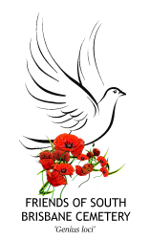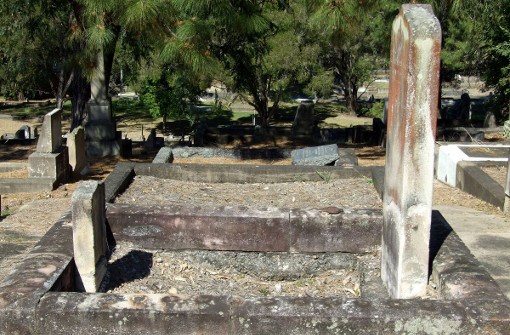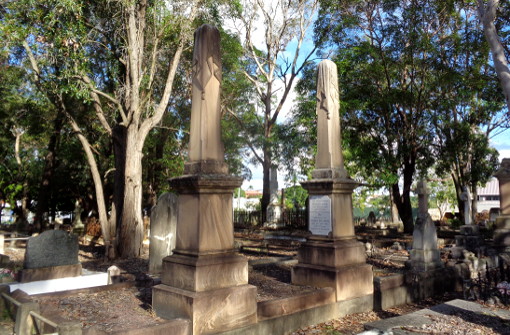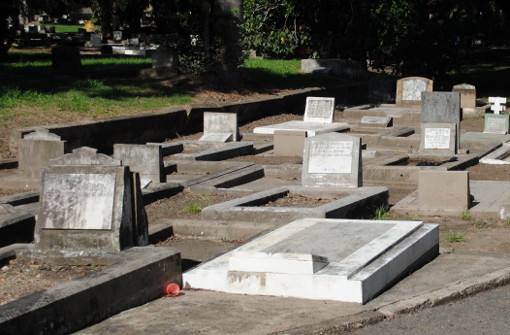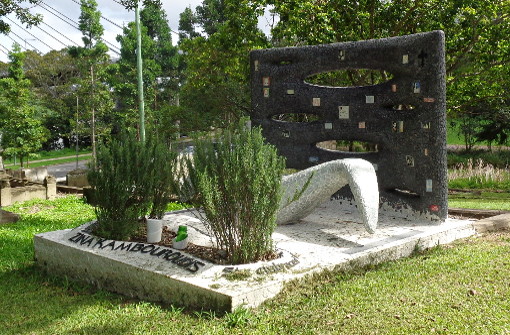Headstone Evolution
There is often a great variety of grave monuments to be found in historic cemeteries that have, like South Brisbane, been used over 150 years. Generally, speaking, the style of these monuments can be divided into four distinct eras.
Early-to-mid 19th century
The common style at this time was for a tablet-style headstone (sometimes with an arched top) at one end of the grave, with a small footstone at the other. Sandstone was the most commonly used material at this time as it was more readily available. The footstones were usually inscribed with the initials of the deceased and the year of death. These were used in the early Brisbane burial grounds at Skew Street and Paddington (1820s-70s), and in later years some of these monuments were transferred to cemeteries such as South Brisbane and Toowong, where they can still be seen today.
Later 19th century
This was the ‘golden age’ of grave monuments, notable for the variety and occasional grandeur of the stones. For the wealthy, grave monuments became an obvious statement of social status and public grief, and so large marble statues and columns would be erected on the graves of loved ones. These were very expensive, and poorer people continued to use simpler tablets or crosses, often made of sandstone. The very poorest often had no marker at all. Monuments of these era tend to feature rich Victorian-era symbolism, with plants and flowers, religious icons or hands and faces being prominent.
Mid-20th century
Monuments took on a simpler form sometime after the carnage of the First World War. This was reflected in the simple yet beautiful white marble headstones used on the graves of service people who died as a result of that war. By the mid-century, most headstones had a very common style, being low concrete tablets with a plain inscribed facing ledger (usually marble). However, lead lettering became more elaborate around this time. Symbolism was rare, and there is a sense of social conformism to these stones. Of course, this was not a uniform trend and there were still a few distinctive monuments erected during this period.
21st century
There has recently been something of a return to the ‘showiness’ of late 19th-century grave monuments. Newer monuments in Brisbane cemeteries tend to be highly-stylised expressions of love for the deceased. As always, not everyone can afford grand monuments, but even small plaques often feature symbolism reflecting their interests and passions. There are scattered examples in Toowong and South Brisbane, although they are most noticeable in the newer sections of the Mt Gravatt Cemetery. While the grief of death is still profound, there is a modern tendency to ‘celebrate’ the life and loves of the deceased.
